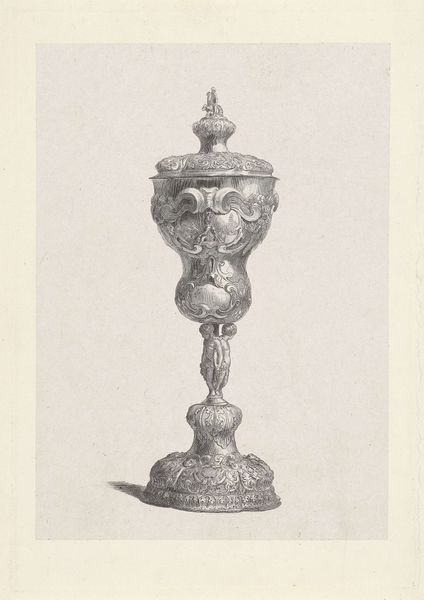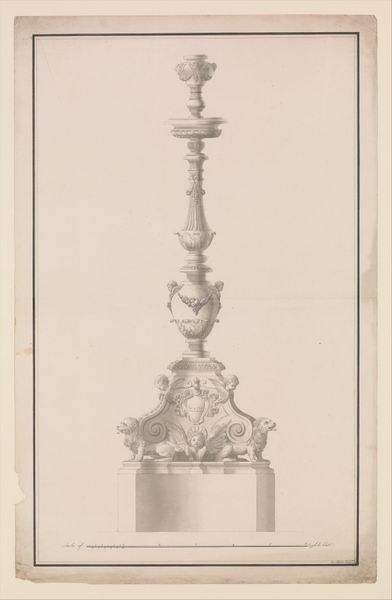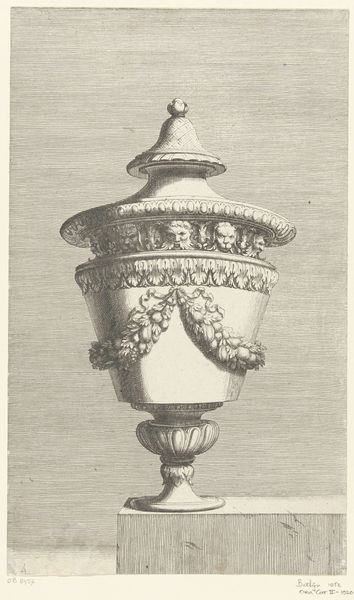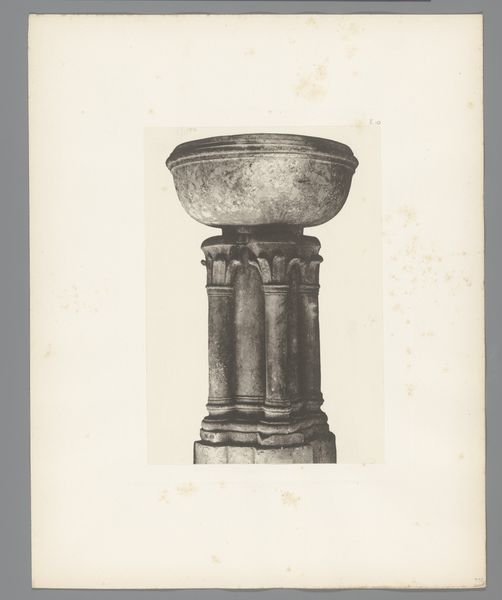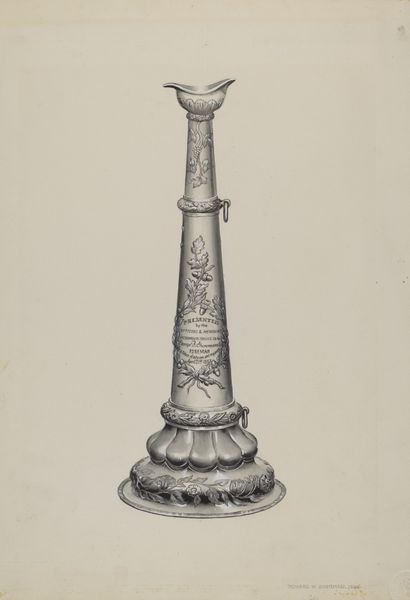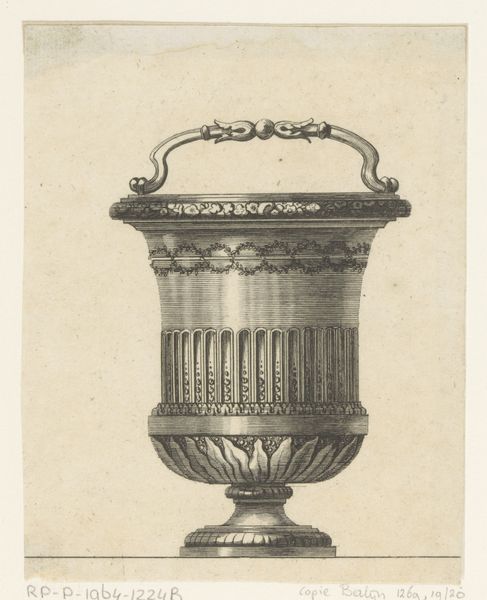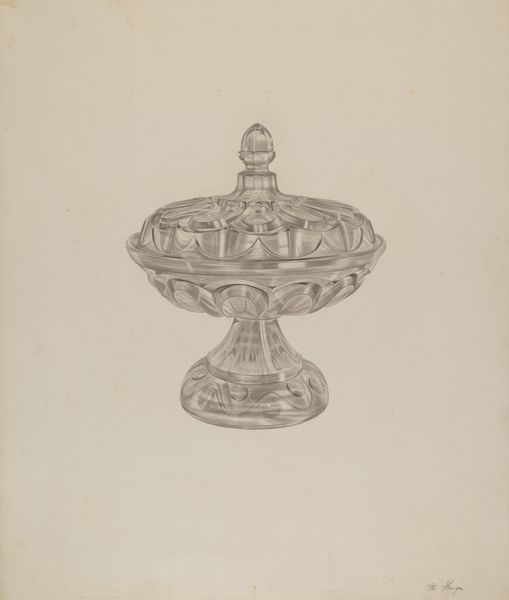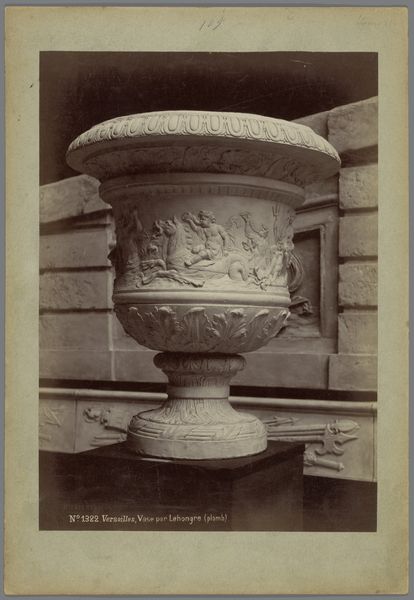
carving, silver, print, metal, etching, photography
#
carving
#
silver
# print
#
metal
#
etching
#
photography
#
photojournalism
#
framed image
#
carved
#
19th century
#
decorative-art
Dimensions: height 168 mm, width 107 mm
Copyright: Rijks Museum: Open Domain
This ornate covered goblet was crafted by Carl Emil Mögle. Notice the putto figure seated atop the lid, a symbol of innocence and playfulness. This motif stretches back to classical antiquity, where winged infants adorned Roman sarcophagi, representing the soul's journey. These figures, rooted in pagan traditions, were later adopted into Christian art as cherubs, thus undergoing a metamorphosis, acquiring a new religious significance. Observe how the putto has resurfaced throughout the Renaissance and Baroque periods, often in secular contexts, adorning gardens and domestic interiors. The recurrence of the putto speaks to our collective memory, resonating as a primal symbol of hope and renewal. Feel the cup's visual language, engaging viewers on a subconscious level, evoking a sense of nostalgia and a connection to a timeless past. The symbol of the putto continues its non-linear journey through time, its meanings shifting, evolving, and echoing in our cultural consciousness.
Comments
No comments
Be the first to comment and join the conversation on the ultimate creative platform.
